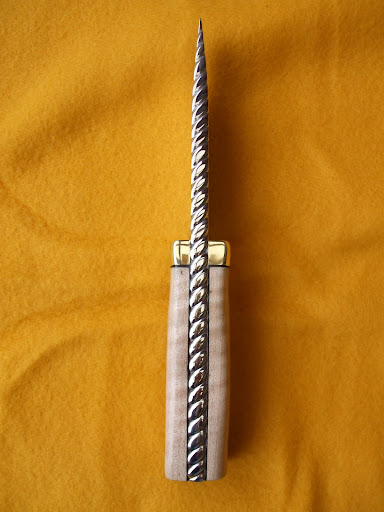- Joined
- Jun 26, 2020
- Messages
- 164
Hello everyone , been working on my first take down knife on which I would have to make filework after it was finished. All went good but now that I’m on to that part I feel nervous as I have not done it, here’s a test work I did on a plate , which one would you recommend me to do the chain or the rope ? I have not done each so any advice is welcome , I used round diamond head to make the round but it turned out as oval so I just did the rounds with a center punch , did the sides with a cone shape diamond dremel bit , should I risk it ? It’s a very expensive knife and last thing I want is mess it up , I’m sure whichever I will do won’t be perfect should I still risk making it ? Whole extra Buttpain was for that decorations on the spacer to make it takedown it will take the knife to next level but I’m nervous to messing it up as I’ve never done it.



any advice is very welcome! The rope is not made by me ,just as an example



any advice is very welcome! The rope is not made by me ,just as an example









